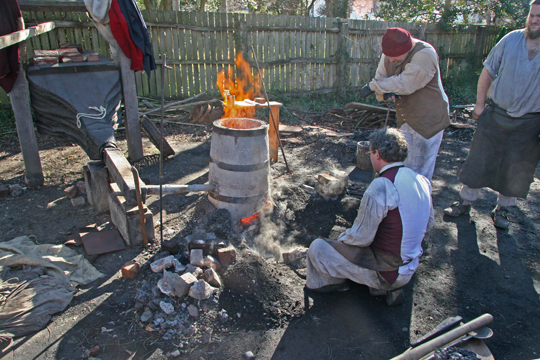

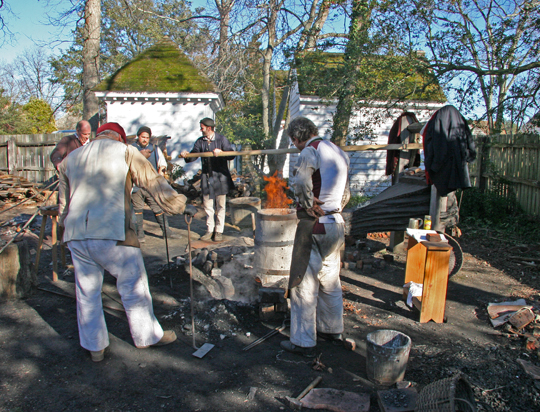
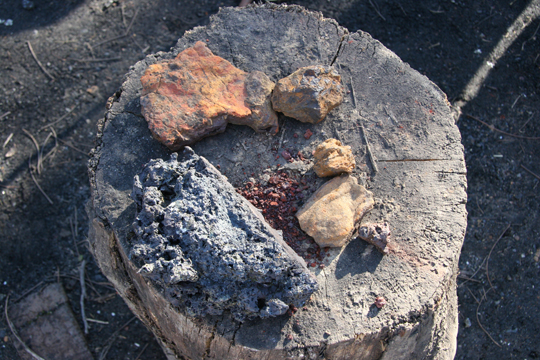
Iron ore in our area is called "bog ore" and is
red/brown in color and can be hard or soft.
The grey mass in the foreground is part of an earlier
bloom.

Steve is extracting the bloom from the bottom of the
bloomery with large tongs.
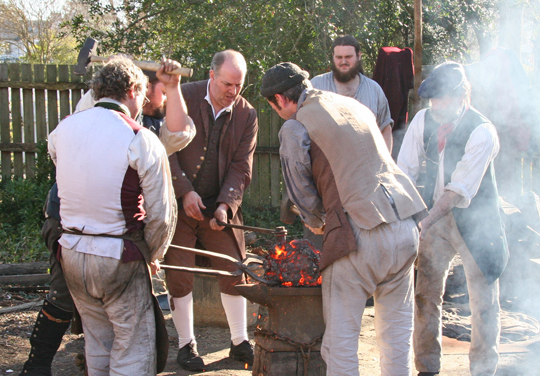
Two pair of tongs stabilize the bloom while two sledges
and a hot cutter divide it into workable chunks.


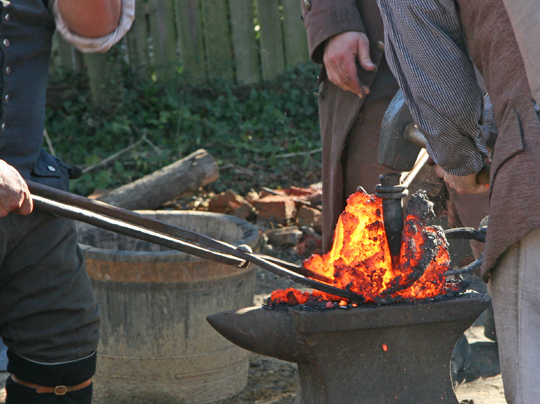
Each of these masses of iron will be forged out into a
bar then folded back on itself, welded, drawn out again,
etc. until the impurities are squeezed or burned out.
The silica that remains will be in thin elongated thread
like inclusions that give wrought iron its "grain." |